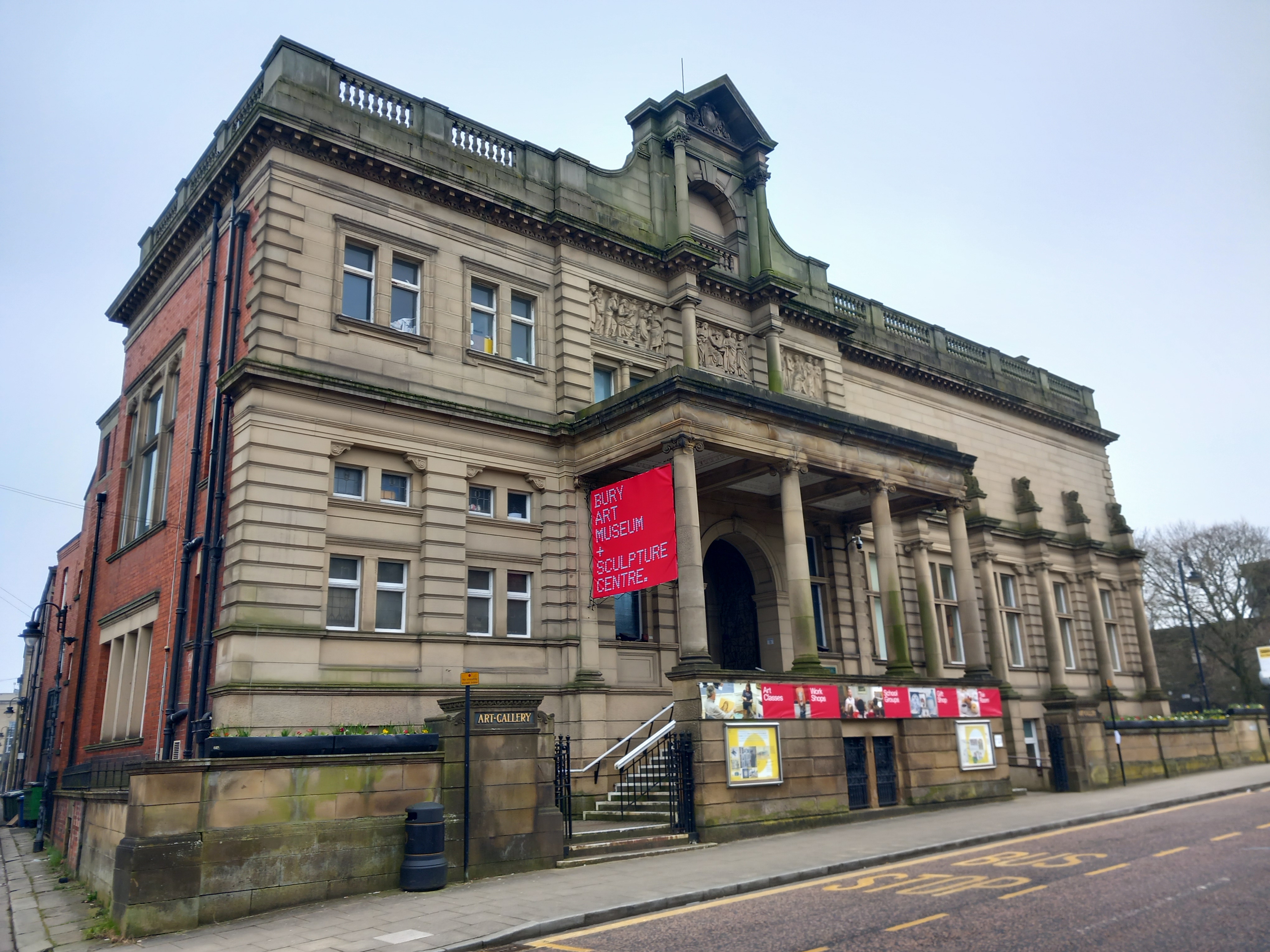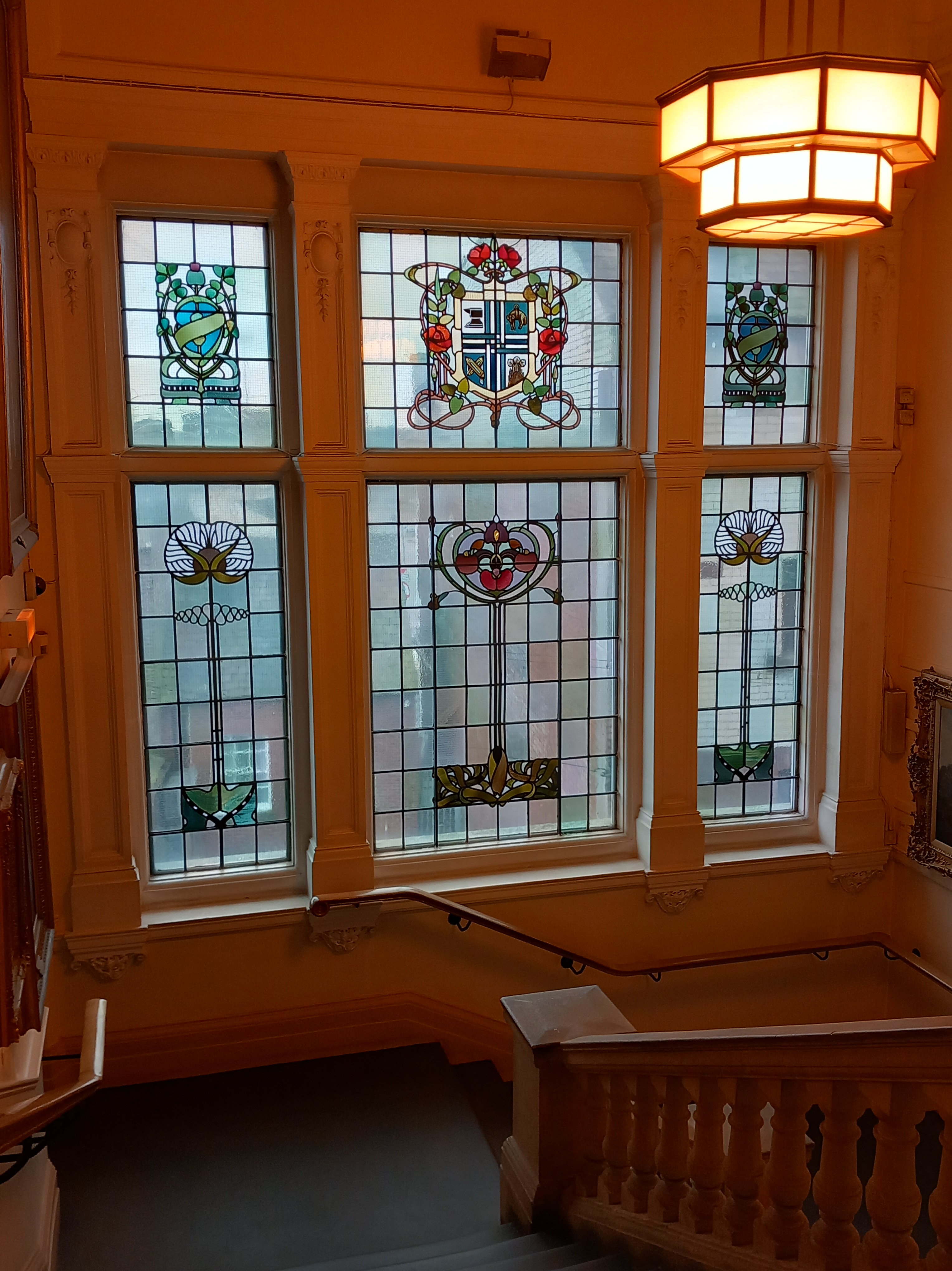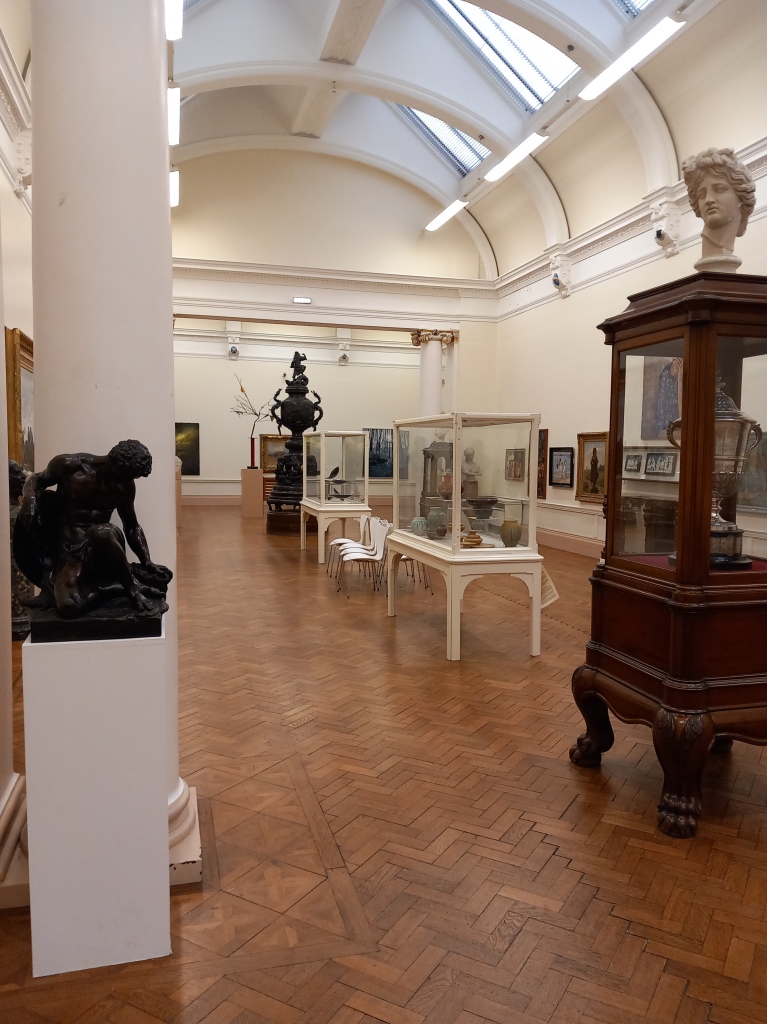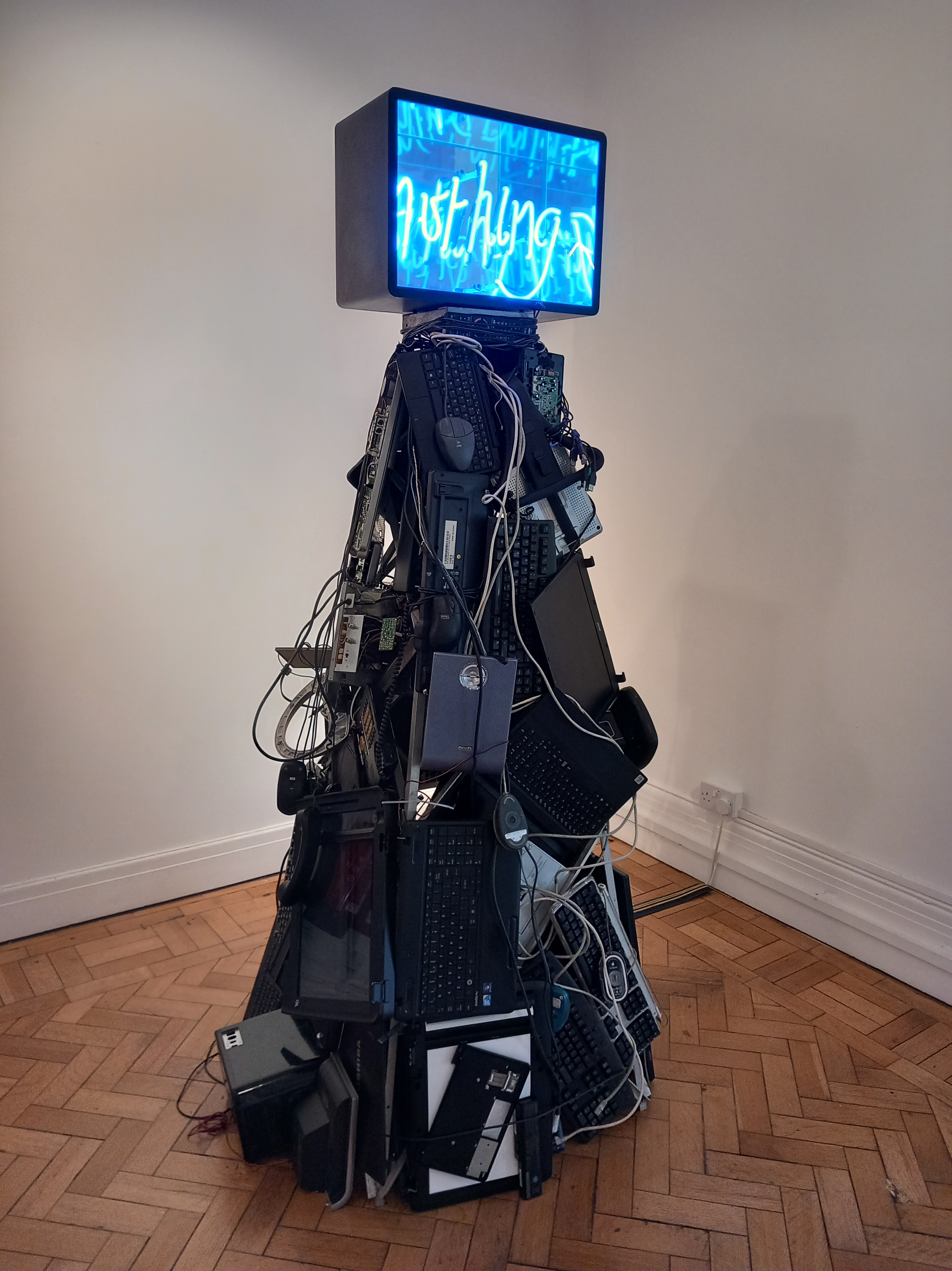Bury Art Museum and Sculpture Centre is described as “probably the best building in Bury” by the famed architectural historian, Sir Nikolaus Pevsner. It stands on Silver Street, Bury’s grandest architectural road. Bury Art Gallery (as it was first known) was built to hold the Wrigley Collection of over 200 paintings and ceramics. These were gathered over a lifetime of collecting by local wealthy magnate Thomas Wrigley. He inherited his father’s Bridge Hall paper mills in 1846, and made Bury one of the great paper-making regions of the world. A Liberal and Unitarian, he was noted for his campaigning and philanthropy, lobbying for a general education system for all, years before this came to pass.
After his death in 1880, he left his paper mills and million pound fortune to his three sons, and his Bury home and holiday house on Windermere to his daughter. In 1897, his children decided to donate the entire collection to the people of Bury. Their only condition was that suitable premises would be required to display it. Broom Hall, the grand home of John Hutchinson, had been recently demolished and this freed up the site for a purpose-built art gallery to be constructed.
A competition was held in which architectural firms submitted their designs. It was won by Woodhouse and Willoughby of King Street, Manchester. The foundation stone was laid by Thomas Wrigley’s son Oswald Osmond on 29 April 1899. Built in the English Renaissance style, JJ Millson designed friezes for its outside featuring a plethora of stunning figure carvings. Millson also worked on the Bury Arts and Crafts Centre opposite (now the Fusiliers Museum). The interior of the gallery was furnished with mosaic floors, a grand stone staircase up to the first floor, and stained glass throughout designed by Walter J Pearce. Pearce was a Master of the Northern Art Workers Guild and a Fellow of the the British Society of Master Glass Painters. His work is described as “loose Art Nouveau”.
The building was opened by Frederick Stanley, 16th Earl of Derby, on 9th October 1901. The mayor of Bury, Colonel Walker, stated “It’s a happy thing for the people of Bury that our friends, the members of the Wrigley family, inherited not only the pictures from their father but that they inherited his generous impulses and kindly heart. We honour them and are grateful for their magnificent gift”. The Wrigley collection included important works by JMW Turner, John Constable, Lady Elizabeth Butler and Edwin Landseer.
A Museum is Added
Two years after the gallery opened, a subcommittee proposed that a museum be set up as well, but this was rejected. In 1906 a second attempt was made, this time successful, and the following year the museum opened in the basement. The first donations came from Jonathan Blunt, James Kerr and Alderman Duxbury. Blunt gave a collection of weapons including muskets, a flintlock shotgun, pistols, cutlasses, sabres, as well as African and Polynesian spears and clubs. His collection also included Belgian shoes and Canadian snow shoes. Kerr’s geological collection was donated by his three sons – some 100 specimens, half of which were fossil, the rest rocks and minerals of good quality. The Duxbury gift was a large collection of birds. These three types of exhibits – artefacts from around the world, geological specimens and taxidermy – were fairly typical of museum displays at the start of the 20th century. They offered a broadening of the public’s education, showing things that were not commonly seen in everyday life.
With the advent of mass production of illustrated books and the growth in television ownership giving the public more information about the world at large, museums turned more to collecting locally historic artefacts. This was certainly true of Bury and the change was well under way by the 1960s. In 1974, Bury was no longer part of the traditional county of Lancashire (at least as far as the bureaucrats were concerned) and was put into the newly-created county Greater Manchester as a Metropolitan Borough. This gave a sharpening of focus, with collecting now preceding from the borough areas of Prestwich, Radcliffe, Ramsbottom Tottington and Whitefield. The 1970s also saw the museum receive some of collection of Radcliffe Museum when it was permanently closed.
A Disastrous Decision
A large scale refurbishment costing £1.2 million was finished in 2005, with a brand new museum being constructed in the basement. What had previously been a set of small static displays was replaced with display cabinets that were much larger and could be changed easily on a regular basis. The very next year though, a decision was made that would affect the gallery and museum for years to come.
Just one year after the reopening, Bury Council had a budget shortfall for its social services. The local councillors came up with the idea that they would sell one of the gallery’s most prized possessions to plug this hole in the funding. The painting they selected was LS Lowry’s A Riverbank, which had been bought in 1951 for £175. Lowry had close links to Bury, having been president of Bury Art Society. He also had taught at the Bury Arts and Craft Centre. It was thought that the painting could be sold for over half a million pounds.
There was an immediate local outcry, and then national uproar. The council leader defended the decision, stating that without adequate money for social services the vulnerable were at risk, and that “people come before a picture and that can only be right”. Retribution followed. Bury Council was barred from membership of the Museums Association and removed from the Museums, Libraries and Archives Council (MLA) accreditation scheme, as was the museum and gallery itself. This meant it would no longer be able to apply for grants and other funding streams from these and other related agencies. Mark Taylor, the Director of the Museums Association, stated “The council has demonstrated a complete disregard for its responsibility to care for and preserve Bury’s cultural heritage”. Chris Bart MLA Chief Executive said “The Accreditation Panel has made an unanimous decision to remove Bury’s Museum’s Accredited Status”. He added “The rules of the scheme are in place essentially to maintain and preserve our country’s heritage, therefore breaking those rules not only affects future funding for the museum, but creates a cultural deficit for the people of Bury“.
Bury Council stated that it was “extremely upset” at the MLA decision and stressed that the money would “help secure the future of frontline services”. The Bury council leader said “We are very disappointed that MLA has made this decision but our alternatives were very limited when it came to a decision between key services for the community or a work of art, we had to make a very tough decision.” He added “People must come first.” The Bury Council Chief Executive said that the Museum Association statement had caused “resentment” by accusing the council of “culture vandalism”. He then went on to report that the fee the council had saved by no longer being a member of the Museums Association had been used to buy a piece of (unnamed) contemporary art.
On 17th November 2006, A Riverbank was sold at Christie’s for £1.4 million, the second highest amount for any Lowry painting at the time. To see a good copy of the painting, and read the commentary on how Lowry painted it, see Christie’s page here.
There are two factors at play here. The first is that famous artists’ work is sold as a speculative investment for the rich and powerful. This may be seen as an abhorrent practice, but is part of the financial system in a world with free markets. The second is the precedent that Bury Council was setting. If every time there was a budget shortfall, a council would merely look at its art collection to see what it could sell off, very few original works of art by famous artists would be left in public museums and galleries. When Bury Council made the decision, it was three years before the unforeseen world banking crisis that would go on to trigger austerity for so many countries. In Britain, austerity was imposed between 2010-2019 and in that time the ruling party at Westminster took away £100 million from Bury Council. If councils and museums during that time had been allowed or encouraged to sell their works of art, how much would there now be left for the public to see?
A New Way Forwards
In 2011, the building was renamed Bury Art Museum. The staff had to look for ways to generate income, as they could no longer apply for grants. They came up with the idea of lending out their most famous works to other countries for short-term exhibitions.
In 2012, Bury Art Museum led the Greater Manchester Museums Consortium in a tour of China with some of their works. The exhibition, called Towards Modernity: Three Centuries of British Art, toured six places in China, including the capital Beijing, and was seen by three million people. This proved very successful, and enabled the art museum to thrive while other local institutions were struggling because of the cuts to their funding during the terrible austerity years. Further tours followed to America and Japan.
Bury Sculpture Centre
2014 saw two major changes for Bury Art Museum. The first was their reaccreditation as a museum and gallery, a major step forwards after their years of being barred. The second was the creation of Bury Sculpture Centre. Fifteen years before, the art director Terry Trehy had created the Irwell Sculpture Trail, which features 70 artworks stretching from Bacup to Salford Quays. His idea was now to set up a sculpture visitor centre for it, with Bury being an ideal place as it was halfway between the two ends of the Irwell trail. Two rooms of Bury Library (which adjoins Bury Art Museum) were cleared of books to do this, a decision that was not without controversy and still rumbles on some ten years later. The rooms were chosen because of their natural lighting, with one having large windows and the other an overhead domed window and original glass panels on the floor that can be illuminated from beneath. Since its creation, it has seen regular changing exhibitions from contemporary artists, all free to view.
In recent years, further council budget cuts and expensive building repairs required to the roof have once again threatened the future of Bury Art Museum. A consultation with Bury residents showed how much they valued the museum and gallery, and new income streams have been mooted such as being a host site for weddings, parties and conferences. With visitor numbers not reaching those that were achieved pre-Covid, the council is calling on residents to visit and show support.
Visiting Today
The museum has over 60,000 social history objects and is still receiving new donations. With regularly changing exhibitions in the basement, and a semi-permanent section on Bury Castle, it is always worth dropping in or making a special effort to see. The first-floor galleries again have a regular rotation of the extensive painting collection. Its jewels, including JMW Turner’s Calais Sand, George Clausen’s Spring Morning and John Faed’s The Cruel Sister are not to be missed. The first floor also features local work from artists and artisans for purchase, as well as a vintage-style cafe. The ground floor has the contemporary Sculpture Centre and bookshop. Entry to all of the galleries, the museum and Sculpture Centre is free. The website is here.
Site visited by A. and S. Bowden 2024
Access
Tuesdays, Wednesdays, Thursdays, Fridays 10 am to 5pm
Saturdays 10 am to 4.30pm
(Closed Sundays and Mondays)
The cafe has similar opening hours to Bury Art Museum
The website is here
Nearby
References
buryartmuseum.co.uk/
artuk.org/visit/venues/bury-art-museum-6547
manchestervictorianarchitects.org.uk/architects/john-jarvis-millson
manchestervictorianarchitects.org.uk/index.php/architects/walter-j-pearce
en.wikipedia.org/wiki/Thomas_Wrigley
museumsassociation.org/museums-journal/news/2009/11/14648-2/#
news.bbc.co.uk/1/hi/england/manchester/6183547.stm 15/11/2006
theguardian.com/commentisfree/2006/oct/27/arts.visualarts
l-s-lowry.co.uk/lowry-riverbank.html
christies.com/en/lot/lot-4806320
manchestereveningnews.co.uk/news/greater-manchester-news/councils-lowry-sells-for-14m-1048325
advisor.museumsandheritage.com/features/bury-art-museum-touring-its-way-out-of-trouble/
a-n.co.uk/news/bury-sculpture-centre-cutbacks-and-controversy/
tony-trehy.blogspot.com/2019/10/leaving-bury.html
irwellsculpturetrail.co.uk
burytimes.co.uk/news/23119923.residents-say-future-bury-art-museum/
manchestereveningnews.co.uk/news/greater-manchester-news/bury-arts-museums-future-scrutinised-25416963
museumsassociation.org/museums-journal/news/2022/11/bury-art-museum-under-review-as-council-cuts-costs/
burytimes.co.uk/news/23384564.bury-council-call-residents-support-art-museum





Comments are closed.